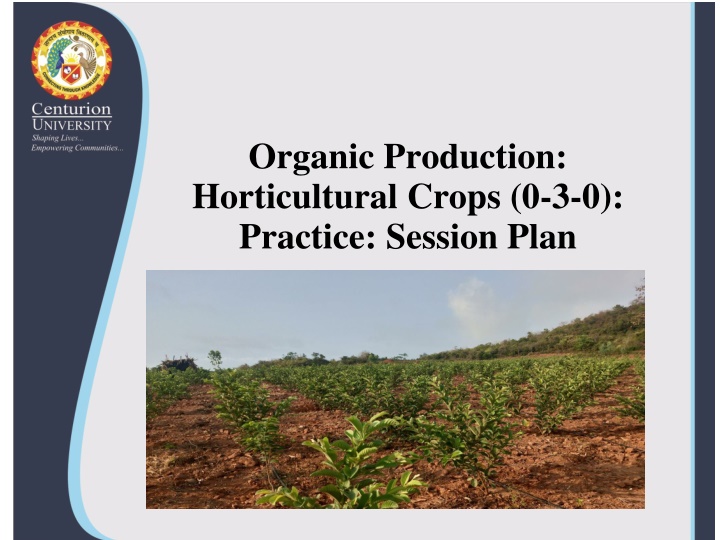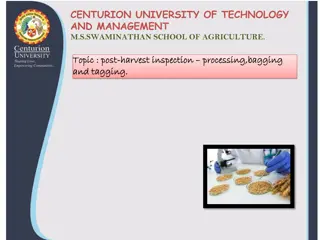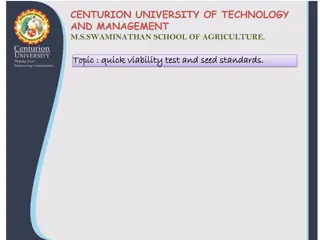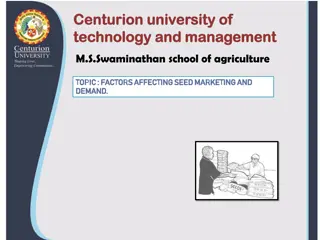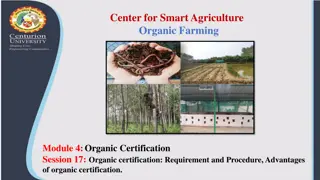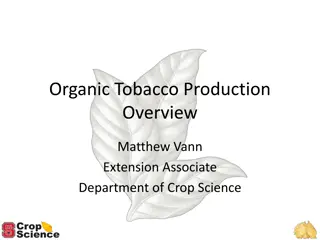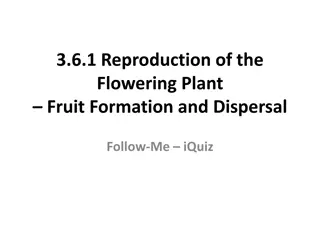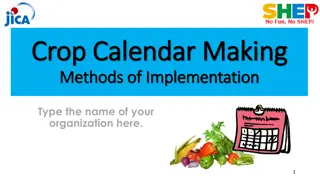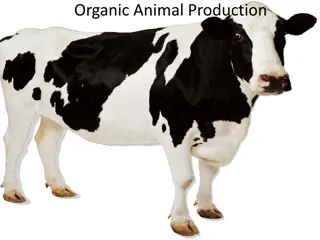Organic Seed Treatment Techniques for Improved Horticultural Crop Production
Explore the benefits of organic seed treatment methods for horticultural crops, such as priming, pelleting, and seed health treatments. Learn how these techniques can enhance germination rates, protect against pathogens, and optimize planting accuracy in organic farming practices.
Download Presentation

Please find below an Image/Link to download the presentation.
The content on the website is provided AS IS for your information and personal use only. It may not be sold, licensed, or shared on other websites without obtaining consent from the author.If you encounter any issues during the download, it is possible that the publisher has removed the file from their server.
You are allowed to download the files provided on this website for personal or commercial use, subject to the condition that they are used lawfully. All files are the property of their respective owners.
The content on the website is provided AS IS for your information and personal use only. It may not be sold, licensed, or shared on other websites without obtaining consent from the author.
E N D
Presentation Transcript
Organic Production: Horticultural Crops (0-3-0): Practice: Session Plan
Seed Treatment Aim: To familiarize with seed treatment through organics in horticultural crops Purpose: 1. eradicate protect from soil borne pathogens, seed borne pathogens or 2. optimize ease of handling and accuracy of planting (reduce gaps in stand or the need for thinning particularly when mechanical planters are used), and of seedlings, 3. Improve germination rates.
Organic seed treatment In conventional production, seed is often treated with chemical fungicides which reduce seed and seedling losses due to seed borne and soil borne disease. There are some seed treatments, priming, pelletizing, and the use of hot water or NOP-compliant protectants, that can be used by organic farmers to improve seed performance. Pelleted seed is useful in head lettuce production because precision seeding, but is less advantageous for thick sowings of loose-leaf lettuce in bed production. such as of the need for
Priming Primed seed has absorbed just enough water to dissolve germination inhibitors and activate the germination. Primed seed is therefore in a suspended state germinates faster and more uniformly over a broader reducing the likelihood of very thick or thin plant stands. Priming results in earlier seedling establishment, which can aid in fending of the attack of damping-off pathogens to which germinating seedlings are particularly vulnerable. early stages of of growth, so it temperature range,
Pelleting A seed pellet is a coating, usually of clay mixed with other inerts, that streamlines the size, shape, and uniformity of a small, non-round seed such as those of lettuce, carrots, onions, and many herbs and flowers. Ideally, the pelleting materials are somewhat permeable absorb water quickly so that the pellet splits immediately Conventional pelleting techniques using synthetic inert materials are not approved for organic use, but there are now several pelleting materials on the market that are approved for use on organic farms. to oxygen and upon hydration.
Seed Health Treatments This is a broad category of treatments that includes hot water, biological and plant extracts, bleach biological (microbes). These treatments can improve seed and seedling health by eradicating seed borne pathogens from the seed or protecting germinating seeds from attack by soil borne pathogens. disinfection, and
Hot water treatment The use of hot water treatment to eradicate seed borne diseases, particularly those caused by bacteria, is well-established. The typical procedure consists of: 1) warming the seed in 100 F water, 2) heating the seed for 20- 25 minutes, depending species, in a 122 F water bath, 3) cooling the seed for 5 minutes in cold water, and 4) rapid drying. As the disease is seed borne, hot water treatment (dipping the seeds in hot water at 53 C for about 30 minutes) is a good precaution. plant pathogenic on the crop
Plant extracts and oils However, cinnamon, clove, lemongrass, oregano, savory, and garlic show some potential to suppress damping-off, and thyme oil is in use in Europe as a seed treatment. Pure soybean or mineral oils have been shown to reduce storage molds of maize and soybean. Further research on the disease suppressive potential of these oils is necessary to determine the viability of essential oil-based protocols. plant oils such as thyme, seed treatment
Bleach disinfection Bleach (sodium hypochlorite) can be used to surface-disinfest seeds as an alternative to hot water. Bleach pathogens on the seed surface but will not eliminate pathogens beneath the seed coat. Sodium hypochlorite is allowed for use on organic farms to disinfect wash water, provided that the levels not exceed the maximum residual levels of the Safe Drinking Water Act, which currently is 4 ppm expressed as chlorine. will eliminate contamination
Biological seed treatments 1.Seed azotobacter can save 20 to 30 kg N/ha or PSB along with optimum nutrition can give good yield. treatment with Azospirillum or 2. Method by which Trichodermaviride is used: Seed treatment:The seed has to be washed first to get rid of any chemical fertilizers and pesticides. TV culture @ 4 gm per kilo of seed is mixed with starch to make a sticky paste. The seed is mixed with the paste and then dried in the shade. The dried seed is sown immediately thereafter.
Seedling treatment: Twenty grams of TV is mixed in a litre of water. Seedlings of brinjal, chili, tomato, cabbage, etc., are immersed in the water for five minutes before they are transplanted to the main field. Nursery treatment: About 50 gm of TV culture is mixed vermicompost or compost and mixed with the soil for each 64.8m2 of land. with 500 gm of
3. Using cow dung solution : Treating paddy seeds in a cow dung solution enhances their germination. Take 1 2 kg of fresh cow dung and two litres of cow urine and dilute them with five litres of water. Soak 10 15 kg seeds first in water for 10 12 hours and then in the cow dung solution for 5 6 hours. Dry the seeds in the shade before sowing them in the nursery.
4.Using sweet flag extract : Dissolve 1.25 kg of sweet flag rhizome powder in six litres of water. Tie the seeds in small bags and soak them in the extract for half an hour. Dry the seeds in the shade before sowing. Treatment of rice seed with amrutpani/panchagavya/cow pat pit manure/jeevamrut is also effective.
